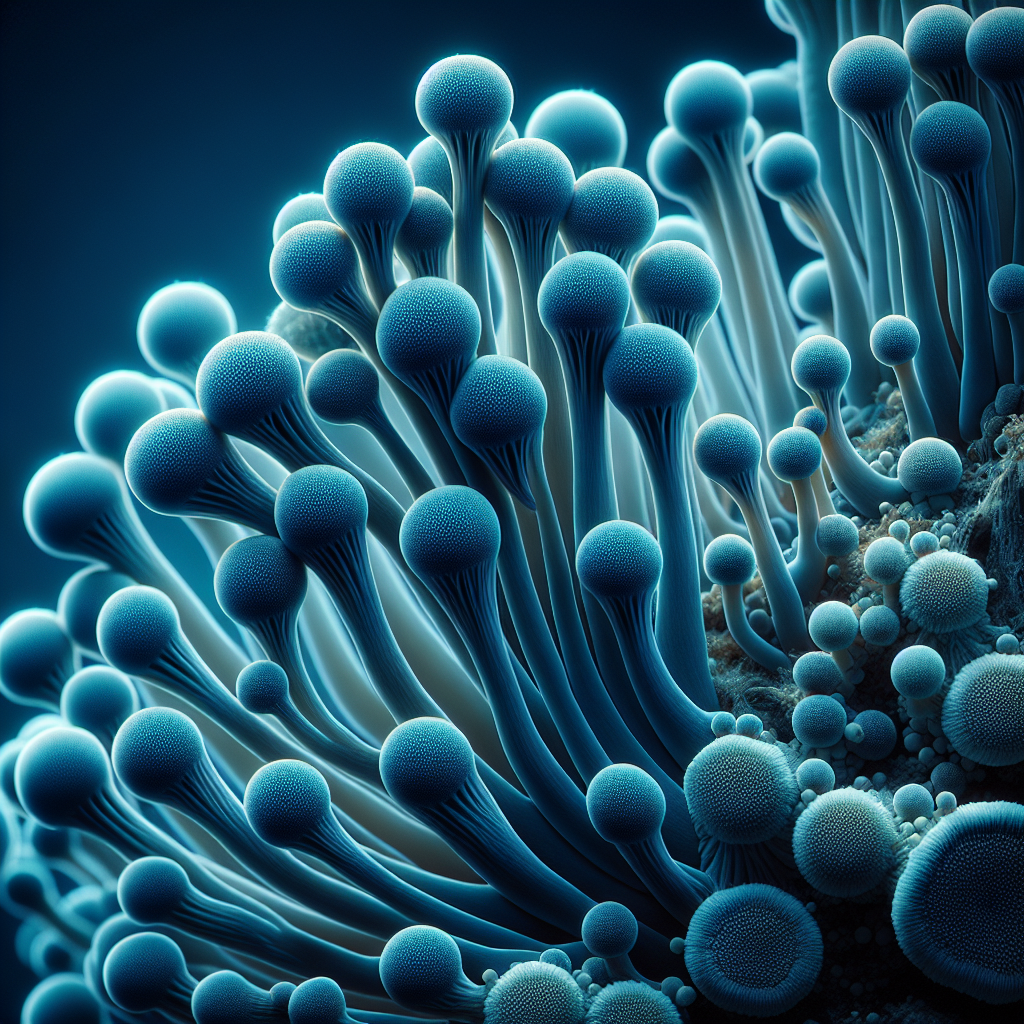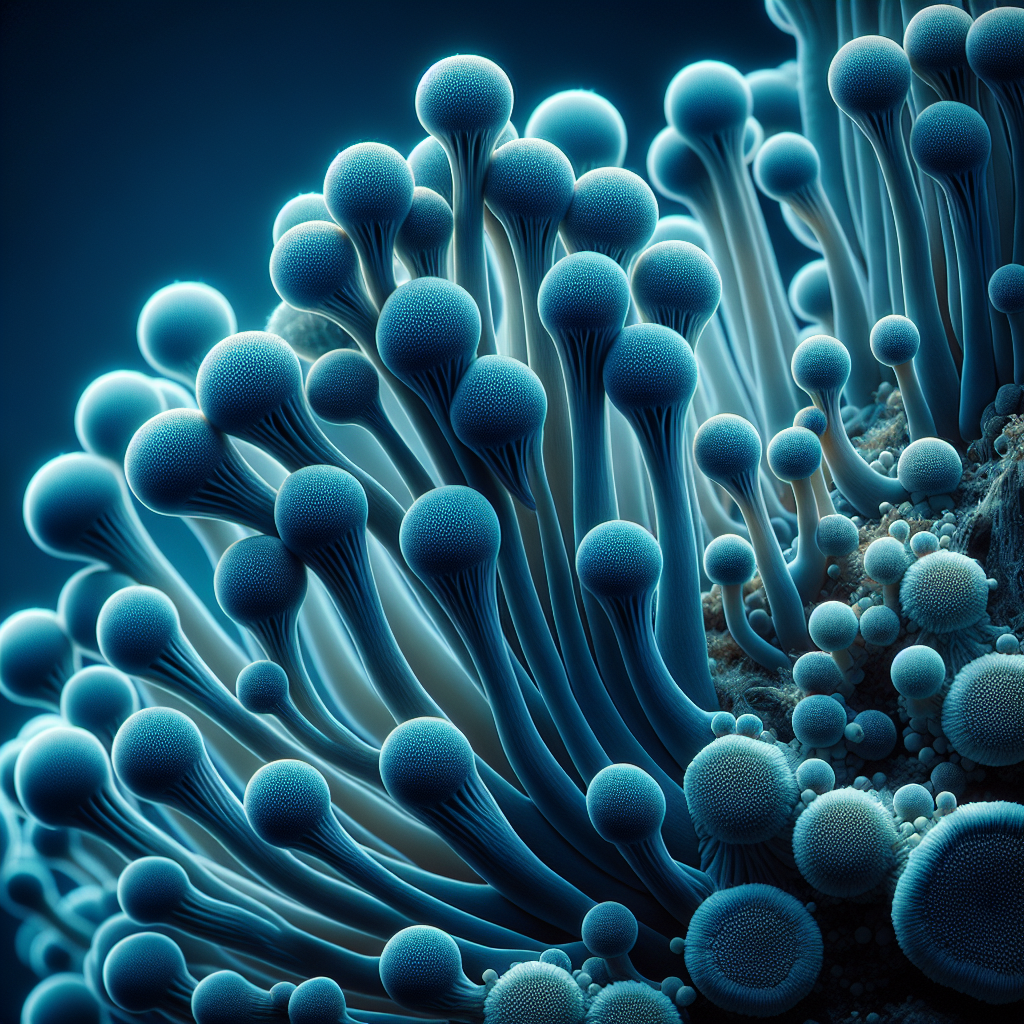In the realm of mycology, the growth process of Pan Cyan Mycelium is an intriguing subject. This article uncovers the intricate journey of the Pan Cyan Mycelium’s lifecycle, shedding light on each stage from incubation to full-grown fruiting bodies. As you navigate through this piece, you’ll gain insights into the environmental conditions favoring the growth, the nurturing process, and the common impediments faced. Such knowledge is instrumental, not only for mycology enthusiasts but for individuals who are keen on understanding the broader world of fungi. This comprehensive discourse ultimately equips you to better appreciate the complex and fascinating world of mycelium and its valuable contribution to our ecosystem.
Understanding Pan Cyan Mycelium
Pan Cyan Mycelium, also known as Panaeolus Cyanescens, is a variety of fungi that belongs to the Psilocybe genus. Known for its psychoactive properties, it is a species of interest for both commercial enterprises and scientific research. Understanding the growth process, the requirements, and cultivation methods of Pan Cyan Mycelium is crucial for harnessing its potential benefits.
Species description
As a part of the Psilocybe genus, Pan Cyan Mycelium shares the typical characteristics common to its species – a saprotrophic lifestyle, which involves obtaining nutrition from decaying organic materials. This type of fungus has a bluish hue, earning itself the name ‘blue meanies’, and produces dark, blackish spores, which are a distinctive feature in comparison to its relatives.
Mycelium importance
The mycelium, the vegetative part of the fungus composed of a network of hyphae, plays a significant role in the life cycle of Pan Cyan. Serving as a base from which fruiting bodies sprout, it also aids in the absorption of nutrients from the substrate, assisting in its role of decomposing organic matter.
Pan Cyan’s position in the fungal kingdom
Ranging amongst the middleware in the fungal family tree, Pan Cyan serves as an integral part of the Panaeolus division. This division is known for its importance in the ecological niche, ensuring the recycling of organic matter.
Lifecycle of the Pan Cyan Mycelium
The lifecycle of this mushroom broadly consists of four stages which provide vital cues for its efficient cultivation.
Spore germination
The life cycle of Pan Cyan begins with the germination of spores. Under conducive conditions, the single-celled spores begin to grow, elongate and divide, marking the commencement of their life cycle.
Mycelial growth
Upon germination, these spores begin to form mycelium. These thread-like structures form a complex network, absorbing nutrients, and facilitating growth.
Fruiting body formation
Post sufficient mycelial growth, under appropriate conditions, the fungus develops fruiting bodies. These structures are known for their role in sexual reproduction, thus ensuring the persistence and spread of the species.
Spore release and dispersal
The final stage in the lifecycle involves the release and dispersal of spores from the fruiting body. These spores, if they land in a suitable environment, will then germinate, thus initiating a new lifecycle.

Environmental Conditions for Growth
The growth of Pan Cyan Mycelium relies heavily on the suitability of the surrounding environment. The following factors play a significant role.
Temperature requirements
The species requires a moderate climate for growth, generally preferring a temperature range of 22°C to 28°C.
Humidity and moisture needs
Humidity plays a vital role in the growth of mycelium. The spores require a high level of moisture for germination, while mycelial growth thrives in slightly reduced humidity levels.
Lighting conditions
Unlike plants, Pan Cyan does not require sunlight for photosynthesis. However, light is crucial as a direction-giving cue for the formation of fruiting bodies.
Substrate preferences
Being a decomposer, Pan Cyan prefers substrates rich in decaying organic matter such as compost, manure, or straw.
Factors Influencing the Growth Process
The growth and development of Pan Cyan are affected by several factors which must be carefully managed during its cultivation.
Nutrient availability
The quantity and distribution of nutrients in the substrate influence growth. High nutrient availability supports robust mycelium growth, while any deficit might inhibit the process.
Environmental stressors
Any abrupt changes in the surrounding environment can induce stress in the fungus, which might be detrimental to its growth and development.
Interaction with other organisms
The presence of other organisms, such as bacteria or competing fungi, could influence the growth of Pan Cyan. These could either aid in growth or result in contamination.
Cultivation methods
The way the fungus is cultivated also affects its life cycle. The types of techniques used, along with control over environmental factors, significantly influence the growth process.

Stages of Growth
Understanding the different stages of growth can aid in better cultivation techniques and practices leading to better yields.
Initial colonization stage
During this stage, the spores start colonizing the substrate upon their inoculation. This is where the growth of mycelium begins.
Mycelial Run stage
Once colonized, the mycelium begins a rapid expansion known as the mycelial run stage, covering as much surface area within the substrate as possible.
Priming stage
During the priming stage, conditions such as temperature and humidity are manipulated to initiate the formation of fruiting bodies.
Fruiting stage
Finally, under conducive conditions, the fruiting bodies begin to grow and mature, ultimately leading to the release of spores and completion of the lifecycle.
Cultivating Pan Cyan Mycelium
Cultivation of this species requires careful attention to detail to foster optimal growth and yield of fruiting bodies.
Preparation of growth medium
The substrate plays a considerable role in the growth of the fungus. It should be rich in organic matter and must be pasteurized to reduce the chances of contamination.
Inoculation methods
The spores of Pan Cyan are introduced into the substrate using inoculation methods such as spore syringes or spore prints, ensuring optimal colonization.
Maintaining growth conditions
Maintaining the optimal environmental conditions mentioned before is crucial. Regular monitoring and adjustments are required to ensure the best growth conditions.
Harvesting the mature mycelium
The mature fruiting bodies should be harvested carefully without harming the mycelium and the substrate environment.
Common Problems & Solutions During Growth
Cultivation is often not devoid of challenges. Identifying these issues timely and efficiently dealing with them is crucial for a successful harvest.
Contamination issues
Contamination is a major issue faced during the cultivation of Pan Cyan. Regular sanitization of all equipment, along with pasteurization of the substrate, are necessary measures.
Inadequate growth
Inadequate growth could be due to several reasons, including poor substrate preparation, wrong environmental conditions, or contamination. Identifying the cause and rectifying it is the key solution.
Troubleshooting slow growth
In case of slow growth, the environment conditions must be checked, and necessary changes should be made. Additional nutrition can also boost growth.
Dealing with infestations
Infestations are a common challenge. Employing organic pest management strategies along with sterile cultivation methods can help in managing this issue.
Comparative Anatomy of Pan Cyan Mycelium
Understanding the anatomy of Pan Cyan Mycelium can assist greatly in its effective cultivation and its distinguishability from other species.
Morphological features
The unique bluish hue, along with the blackish spores, is a distinguishing feature of this species, setting it apart from its counterparts.
Cellular anatomy
A closer look at the cellular level reveals the structure of hyphae – the building blocks of the mycelium. Understanding their anatomy can offer insights into their nutrient absorption and growth patterns.
Fruiting body structure
The detailed structure of the fruiting body, its cap, stipe, and gills, help us in understanding the dispersal and germination of the spores.
Comparisons with other species
Direct comparisons with other species can further assist in distinguishing Pan Cyan Mycelium and understanding its unique characteristics and growth behaviour.
Commercial and Medicinal Uses
Pan Cyan has potential applications in various fields due to its distinctive properties.
Psychoactive properties
One of the prominent uses of this species stems from its psychoactive properties, which can be utilized in controlled settings for psychological therapeutic applications.
Nutritional values
Like most fungi, Pan Cyan also boasts high nutritional value, making it an excellent source of vitamins, minerals, and proteins.
Industrial applications
In industry, it can be used for the production of certain enzymes, organic acids, and even in biomaterial manufacturing.
Therapeutic potential
The potential therapeutic applications of this species in medicine, especially regarding mental health, have garnered it significant attention.
Pan Cyan Mycelium in Research
Pan Cyan is an area of active research due to its unique properties and potential applications.
Role in ecological studies
Being a decomposer, it plays a crucial role in recycling of organic matter. Studying this can provide insights into nutrient cycling in ecosystems.
Use in pharmaceutical research
Its psychoactive properties make it a promising candidate for research in the field of psychiatry, neurology and mental wellness.
Applications for bioremediation
Studies are also being conducted to explore its potential in bioremediation efforts, an area where fungi have been successfully employed in past.
Future potential and current limitations
While much promise lies ahead, there are still several limitations that need to be addressed, such as issues around cultivation, regulation, and standardization. With continued research and improvements in cultivation techniques, the potential benefits that Pan Cyan Mycelium offers can be fully realized.
